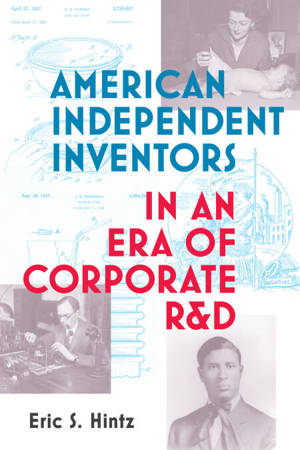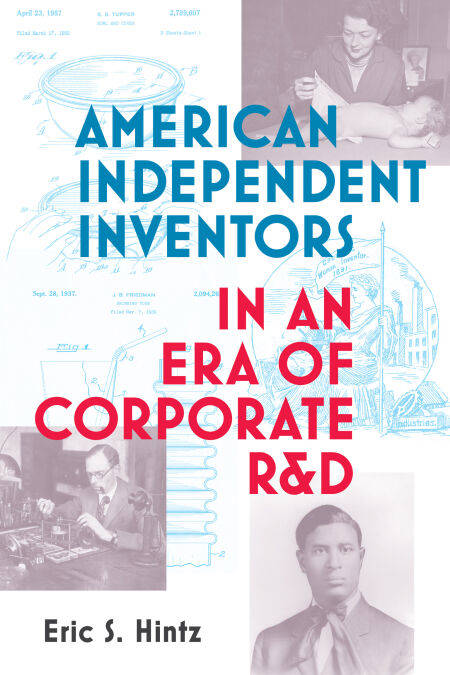
- Afhalen na 1 uur in een winkel met voorraad
- Gratis thuislevering in België vanaf € 30
- Ruim aanbod met 7 miljoen producten
- Afhalen na 1 uur in een winkel met voorraad
- Gratis thuislevering in België vanaf € 30
- Ruim aanbod met 7 miljoen producten
Zoeken
American Independent Inventors in an Era of Corporate R&D E-BOOK
Eric S. Hintz
€ 59,14
+ 59 punten
Uitvoering
Omschrijving
How America's individual inventors persisted alongside corporate R&D labs as an important source of inventions.
During the nineteenth century, heroic individual inventors such as Thomas Edison and Alexander Graham Bell created entirely new industries while achieving widespread fame. However, by 1927, a New York Times editorial suggested that teams of corporate scientists at General Electric, AT&T, and DuPont had replaced the solitary "garret inventor" as the wellspring of invention. But these inventors never disappeared. In this book, Eric Hintz argues that lesser-known inventors such as Chester Carlson (Xerox photocopier), Samuel Ruben (Duracell batteries), and Earl Tupper (Tupperware) continued to develop important technologies throughout the twentieth century. Moreover, Hintz explains how independent inventors gradually fell from public view as corporate brands increasingly became associated with high-tech innovation.
Focusing on the years from 1890 to 1950, Hintz documents how American independent inventors competed (and sometimes partnered) with their corporate rivals, adopted a variety of flexible commercialization strategies, established a series of short-lived professional groups, lobbied for fairer patent laws, and mobilized for two world wars. After 1950, the experiences of independent inventors generally mirrored the patterns of their predecessors, and they continued to be overshadowed during corporate R&D's postwar golden age. The independents enjoyed a resurgence, however, at the turn of the twenty-first century, as Apple's Steve Jobs and Shark Tank's Lori Greiner heralded a new generation of heroic inventor-entrepreneurs. By recovering the stories of a group once considered extinct, Hintz shows that independent inventors have long been—and remain—an important source of new technologies.
During the nineteenth century, heroic individual inventors such as Thomas Edison and Alexander Graham Bell created entirely new industries while achieving widespread fame. However, by 1927, a New York Times editorial suggested that teams of corporate scientists at General Electric, AT&T, and DuPont had replaced the solitary "garret inventor" as the wellspring of invention. But these inventors never disappeared. In this book, Eric Hintz argues that lesser-known inventors such as Chester Carlson (Xerox photocopier), Samuel Ruben (Duracell batteries), and Earl Tupper (Tupperware) continued to develop important technologies throughout the twentieth century. Moreover, Hintz explains how independent inventors gradually fell from public view as corporate brands increasingly became associated with high-tech innovation.
Focusing on the years from 1890 to 1950, Hintz documents how American independent inventors competed (and sometimes partnered) with their corporate rivals, adopted a variety of flexible commercialization strategies, established a series of short-lived professional groups, lobbied for fairer patent laws, and mobilized for two world wars. After 1950, the experiences of independent inventors generally mirrored the patterns of their predecessors, and they continued to be overshadowed during corporate R&D's postwar golden age. The independents enjoyed a resurgence, however, at the turn of the twenty-first century, as Apple's Steve Jobs and Shark Tank's Lori Greiner heralded a new generation of heroic inventor-entrepreneurs. By recovering the stories of a group once considered extinct, Hintz shows that independent inventors have long been—and remain—an important source of new technologies.
Specificaties
Betrokkenen
- Auteur(s):
- Uitgeverij:
Inhoud
- Aantal bladzijden:
- 368
- Taal:
- Engels
- Reeks:
Eigenschappen
- Productcode (EAN):
- 9780262365710
- Verschijningsdatum:
- 16/08/2021
- Uitvoering:
- E-book
- Beveiligd met:
- Adobe DRM
- Formaat:
- ePub

Alleen bij Standaard Boekhandel
+ 59 punten op je klantenkaart van Standaard Boekhandel
Beoordelingen
We publiceren alleen reviews die voldoen aan de voorwaarden voor reviews. Bekijk onze voorwaarden voor reviews.








